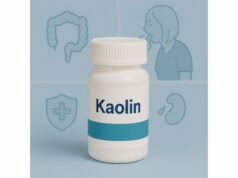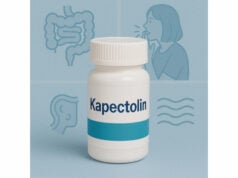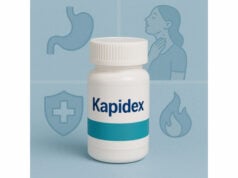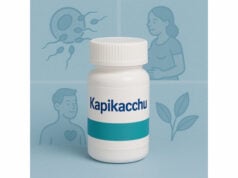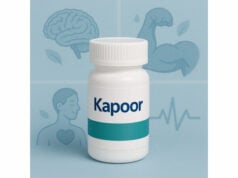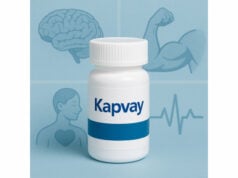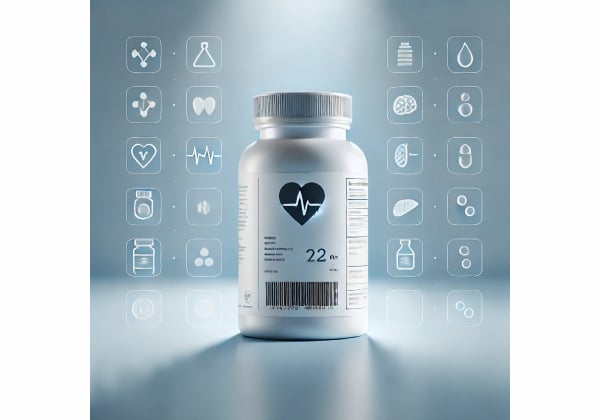
Karanj (Pongamia pinnata), also called karanja or Indian beech, is a salt- and drought-tolerant legume whose seeds yield a dense, aromatic oil long used in Ayurveda and village medicine. Traditionally, the pressed oil has been applied to itchy, scaly, or infected skin; the leaves and bark appear in pastes and decoctions for wounds; and the tree itself has value in agriculture as a biopesticide source and soil-restoring species. Modern chemistry has mapped two hallmark molecules—karanjin and pongamol—along with fatty acids and minor phenolics that give karanj oil its distinctive biological profile. Today, you will see karanj in two very different contexts: (1) topical dermal care and scalp products marketed as plant-based antimicrobial, and (2) biopesticide or biofuel supply chains. That split matters. Cosmetic-grade, well-refined karanj oil can be used on skin with sensible dilutions and patch testing; agricultural-grade extracts are not intended for people. This guide puts safety first: it reviews what karanj seems to do best, how to choose and use it, realistic dosage ranges for topical formulations, who should avoid it, and what the strongest evidence (and gaps) look like so you can make informed, low-risk decisions.
Quick Overview
- Topical karanj (diluted) shows antimicrobial, anti-inflammatory, and antipruritic potential on scaly or itchy skin and scalp.
- Typical cosmetic dilutions: 1–3% for face, 3–10% for body or scalp; begin at the low end and patch test.
- Internal use is not advised outside supervised clinical research; agricultural-grade karanj products are unsafe for ingestion.
- Avoid if you have known legume or seed-oil allergies, active photodermatoses, are pregnant, or are formulating for infants without clinician guidance.
Table of Contents
- What is karanj and how it works
- Benefits: what the evidence suggests
- How to use karanj in practice
- Dosage ranges and formulation tips
- Safety: who should avoid and interactions
- Evidence summary and what to watch
What is karanj and how it works
Plant and oil basics. Karanj (Pongamia pinnata) is a medium-sized coastal tree native to South and Southeast Asia. It fixes nitrogen, tolerates brackish soil, and produces seed pods rich in oil (often 30–40% by weight). The pressed oil—variously labeled karanj, karanja, or honge oil—contains long-chain fatty acids (notably oleic and linoleic acids) plus distinct furanoflavonoids, most notably karanjin and pongamol. These marker compounds appear at low single-digit percentages in well-characterized seed oil and vary by geography, extraction, and refinement.
Signature actives.
- Karanjin: a lipophilic furanoflavonoid with documented insecticidal, acaricidal, and antimicrobial activity. In vitro and animal studies also explore anti-inflammatory, antioxidant, and metabolic effects.
- Pongamol: another furanoflavonoid investigated for anti-inflammatory, antimicrobial, and potential anticancer signals in preclinical models.
Why people use it on skin. In traditional practice, karanj oil is applied to itchy, scaling, or infected lesions—contexts like tinea, eczema-like patches, or scabies in resource-limited settings—often blended with neem, turmeric, or camphor. The modern rationale: the oil’s fatty acids soften scale, while furanoflavonoids and minor phenolics contribute antimicrobial and anti-inflammatory activity. Many users also adopt karanj in scalp oils for flaking and to calm pruritus.
Mechanistic snapshot.
- Antimicrobial/antiparasitic: disrupts insect and mite neuromodulation; shows growth inhibition of selected bacteria and fungi in vitro.
- Anti-inflammatory: downregulation of nitric-oxide–related pathways and pro-inflammatory mediators has been observed in lab models; on skin, users primarily report reduced itch and tenderness when formulations are gentle and correctly diluted.
- Barrier support: as an occlusive, fatty acid–rich oil, it can soften plaques and reduce transepidermal water loss when paired with ceramides or simple emollients.
Important distinctions.
- Cosmetic/therapeutic vs. agricultural grades: The same plant supplies biopesticides used on crops and stored grain. Those concentrates are not skin-safe and are never to be ingested. Choose personal-care suppliers who disclose refinement level, peroxide/acid values, and contaminant testing.
- Ayurvedic vs. modern use: Classical texts describe both topical and internal uses; modern safety standards and the availability of alternatives make topical, diluted use the preferred route for consumer self-care. Internal use should be restricted to clinical protocols.
Benefits: what the evidence suggests
Dermatologic support (topical, diluted). The most practical, lower-risk application is skin and scalp care. Users and traditional sources report improvements in itch, scale, and malodor on eczematous or fungal-prone skin and seborrheic scalps. The plausible biological basis: the oil film reduces water loss; furanoflavonoids help restrain microbial overgrowth; and anti-inflammatory signaling can moderately reduce erythema and tenderness. Because karanj has a characteristic scent and is potent at small percentages, it’s typically blended with neutral carriers (sunflower, coconut fractionate) and soothing co-actives (colloidal oatmeal, panthenol).
Scalp flake and itch routines. For seborrheic flaking, a 3–5% karanj-in-carrier pre-wash oil left on the scalp for 15–30 minutes, 2–3 times weekly, can soften scale before shampooing. A pea-sized leave-on serum at 1–2% can maintain gains on non-wash days. Users often combine with zinc pyrithione or ketoconazole shampoos on alternating days; karanj blends may improve comfort and reduce reliance on medicated shampoos for some, but should not replace them if physician-directed.
Localized troubled patches. For small, scaly plaques (e.g., elbows, shins), a 3–8% karanj blend applied once daily can help with scale feel and itch perception over several weeks. If vigorous burning or persistent redness occurs beyond a brief sting, stop and reformulate lower.
Wound-adjacent hygiene (non-open skin). Traditional pastes used karanj with antiseptic herbs for malarial areas and minor skin nuisances. In modern self-care, limit karanj to intact skin around, not in, wounds; for open lesions or ulcers, seek medical care.
Oral/internal claims—where to stand. Animal data describe metabolic, anti-diabetic, and hepatoprotective signals for karanjin and pongamol as isolated molecules. There is emerging industrial interest in edible-grade pongamia oil subjected to rigorous refining and toxicology testing. However, there is insufficient human clinical evidence to recommend general oral supplementation for health conditions. Until well-controlled human trials define dosing and safety margins, avoid internal use outside research or direct clinician supervision.
Agricultural and environmental uses (context, not a health claim). Karanj-derived actives are validated biopesticides against certain insects and mites, and the tree is used in land rehabilitation. These findings explain why raw extracts can be bioactive—and also why dose and grade matter so much for human use.
Who may find it most helpful (topical).
- Adults with seborrheic scalps or scaly, itchy plaques who tolerate plant oils.
- Those seeking a non-medicinal adjunct between antifungal or keratolytic treatments.
- People in humid or rural settings where plant-based hygiene oils are culturally familiar and affordable, provided cosmetic-grade sources are used.
Where expectations must stay modest. Karanj is not a cure for chronic inflammatory dermatoses. It belongs in a supportive-care toolkit alongside proven therapies, patch testing, and sensible moisturization. If a condition worsens or fails to improve in 2–4 weeks, pivot to clinician-guided treatments.
How to use karanj in practice
Select the right product.
- Look for cosmetic- or therapeutic-grade karanj (sometimes “cold-pressed, refined karanja oil”). Suppliers should provide batch COAs showing acid value, peroxide value, microbial limits, and, ideally, pesticide/heavy-metal screens.
- Avoid products labeled primarily for biopesticide or agricultural use—these may have solvent residues or higher concentrations of active fractions not intended for skin.
- For sensitive users, prefer deodorized/refined oil to reduce scent and potential irritants.
Patch test method (essential).
- Dilute to your planned lowest concentration in a familiar carrier.
- Apply a coin-sized area on inner forearm or behind the ear once daily for 3 days.
- If no persistent redness, swelling, or burning appears 48–72 hours after the last application, proceed to target area. Stop immediately if reactions occur.
Scalp pre-wash softening routine.
- Mix a 3–5% karanj-in-carrier blend.
- Massage a thin film onto dry scalp; leave 15–30 minutes.
- Rinse and shampoo gently. Repeat 2–3 times weekly for 3–4 weeks, then adjust frequency.
Leave-on maintenance for small plaques.
- Start 1–2% on sensitive zones (face, flexures) and 3–5% on elbows/knees.
- Use once daily for 7–10 days, monitor feel, then titrate slowly only if needed.
- Combine with a bland moisturizer; consider niacinamide 2–4% for barrier support.
What to pair, what to skip.
- Good pairs: ceramides, colloidal oatmeal, panthenol, low-dose salicylic acid for plaques, ketoconazole or zinc pyrithione shampoos for scalp (on alternate days).
- Avoid: co-applying with high-strength retinoids, AHAs/BHAs at high concentrations, or benzoyl peroxide on the same site (irritation stacking). Space actives 12–24 hours apart.
Household cautions.
- Karanj has a distinct aroma and can stain light fabrics; use old T-shirts/pillowcases for overnight scalp applications.
- Keep away from pets and children; plant oils can be harmful if swallowed.
When to stop or escalate care.
- If you see worsening redness, spreading lesions, pus, or fever, seek medical assessment.
- Stop if persistent stinging or burning outlasts the first few applications—reformulate lower or discontinue.
Dosage ranges and formulation tips
Topical dilution ranges (consumer self-care)
- Face or intertriginous areas: 1–3% karanj in a neutral carrier (e.g., caprylic/capric triglyceride, squalane, sunflower).
- Body plaques/scalp: 3–10% depending on tolerance; begin 3–5% and titrate only if needed.
- Spot oil for thick scale (brief contact): up to 10% applied 5–10 minutes pre-wash, then rinse.
- Leave-on serums: 1–2% once daily, especially for sensitive skin.
Application amounts and frequency
- A pea-sized dollop (≈0.25 g) covers a palm-sized skin area.
- For scalp, 2–5 mL per session suffices; excess increases mess without more benefit.
- Typical course: 2–4 weeks of consistent use, then reduce to maintenance 1–3 times weekly.
Formulation tips for makers and clinicians
- Solubility: karanj acts like other fixed oils; dissolve in lipophilic carriers; no special solubilizer needed at low percentages.
- Stability: protect from light/heat; include antioxidants (e.g., 0.05–0.1% mixed tocopherols) to limit rancidity.
- Sensory: blend with deodorized carriers or a small amount of lavender/hinoki essential oil (≤0.2%) if tolerated to modulate aroma.
- pH: oil systems have no pH; if using emulsions, keep aqueous phase pH 5–6 for skin comfort.
- Compatibility: can be co-emulsified with shea, coconut fractionate, and esters; avoid high AHA loads in the same product for sensitive users.
Oral dosing—do not self-prescribe.
- Despite growing industrial interest in edible-grade pongamia oil, human dosing standards are not established for general health. Animal toxicology has defined no-adverse-effect levels for refined edible forms, but that does not translate into consumer dosing. Until human trials exist, avoid oral karanj outside ethics-approved clinical studies and individualized medical oversight.
Special scenarios
- Hyper-reactive skin: start as low as 0.5–1%, every other night for a week; increase slowly only if no reaction.
- Coexisting fungal dermatitis: keep karanj as adjunct; maintain standard antifungal routines as prescribed.
- Barber’s itch/folliculitis-prone areas: use a 1–2% post-shave oil on non-broken skin only; discontinue at first sign of pustules.
Safety: who should avoid and interactions
Common, usually mild effects
- Transient warmth or stinging on first uses, especially over freshly exfoliated skin.
- Contact irritation or follicular clogging if used too concentrated or too often on occluded areas.
- Odor sensitivity: the nutty, slightly smoky scent can be bothersome; refined, low-odor oils help.
Less common concerns
- Allergic contact dermatitis: any plant oil can sensitize a subset of users; strict patch testing is essential.
- Photosensitivity potential: while not a classic phototoxin like some citrus oils, prudence suggests daytime sunscreen on exposed sites during initial weeks until you confirm tolerance.
- Contaminants: poorly refined oils may contain residual solvents or storage contaminants; choose reputable suppliers.
Serious risks to avoid
- Ingestion of non-edible grades: agricultural or crude extracts are unsafe if swallowed.
- Using on infants without pediatric guidance; infant skin is permeable and reactive.
- Applying over open wounds or deep fissures; seek medical care for infected or ulcerated lesions.
Who should avoid or seek clinician input first
- Pregnant or breastfeeding individuals (insufficient human safety data).
- History of plant oil dermatitis or legume/seed allergies.
- Chronic photosensitivity disorders or those on photosensitizing drugs (e.g., certain tetracyclines, thiazides).
- Complex dermatologic disease (e.g., significant psoriasis, severe atopic dermatitis) requiring prescription therapy—use only as a supervised adjunct.
Interactions and product stacking
- With retinoids/AHAs: alternating schedules reduce additive irritation.
- With benzoyl peroxide: avoid co-application; combine only under clinician direction.
- With topical steroids: no direct pharmacologic interaction is known, but keep routines simple and track cumulative irritation.
Storage and handling
- Store sealed, cool, and away from light. Discard if rancid or if the oil thickens and smells acrid. Keep droppers/pumps clean to prevent microbial growth.
When to stop and get help
- Rapid swelling, hives, or wheeze after application.
- Spreading redness, pustules, or systemic symptoms (fever, malaise).
- Severe eye exposure—rinse copiously and seek care.
Evidence summary and what to watch
What is well-established
- Chemistry: Pongamia seed oil reliably contains karanjin and pongamol alongside common fatty acids; these furanoflavonoids are biological markers of the oil.
- Agricultural/biopesticide activity: Karanjin is an effective botanical against selected insects and mites; this underpins the need for careful dilution and grade selection for human use.
- Preclinical dermatologic rationale: Laboratory work supports anti-inflammatory and antimicrobial actions of karanjin/pongamol; traditional use aligns with these mechanisms.
What is promising but not yet clinical standard
- Topical adjunct for itchy, scaly skin and scalp: Consumer and traditional reports are favorable. Modern, small-scale formulations suggest comfort and barrier support, especially when blended with moisturizers. Controlled human trials specific to dermatoses are limited; benefits should be considered adjunctive.
- Systemic metabolic effects: Animal models and cell studies point to anti-hyperglycemic and antioxidant properties of isolated actives. Translation to human oral dosing remains unproven; edible-grade oil safety in animals is encouraging but not a license for self-supplementation.
What remains uncertain or variable
- Active content variability: Karanjin/pongamol levels vary by seed origin, extraction, and refining. Two bottles labeled “karanj oil” can behave differently on skin.
- Irritation thresholds: Some users tolerate 5–10%; others react at 2–3%. Start low, track systematically, and prefer short-contact routines initially.
- Long-term safety on sensitive populations: Data are sparse for pregnancy, breastfeeding, infancy, and mucosal use—erring on the side of avoidance is prudent.
Practical research-backed buying checklist
- Ask suppliers for refining details and a certificate of analysis.
- Prefer cosmetic-grade oils with low peroxide/acid values.
- For any talk of “edible” pongamia oil, remember that food-grade status depends on specific refining and regulatory reviews—not all karanj oils qualify.
Bottom line
Karanj is a potent, traditional plant oil most sensibly used topically and diluted, aimed at itchy, scaly, or microbial-prone skin and scalp as an adjunct to mainstream care. Respect the line between cosmetic-grade and agricultural products, and avoid self-directed oral use. With patch testing, modest concentrations, and simple routines, many users find karanj provides noticeable comfort while they continue evidence-based dermatologic treatments.
References
- A critical review of Pongamia pinnata multiple applications: From land remediation and carbon sequestration to socioeconomic benefits (2022) (Review)
- Safety and toxicologic evaluation of Edible Pongamia Oil: A novel food ingredient (2022) (Toxicology)
- Karanjin (2021) (Review)
- Health promoting benefits of pongamol: An overview (2021) (Review)
- Medicinal uses, phytochemistry and pharmacology of Pongamia pinnata (L.) Pierre: a review (2013) (Review)
Medical Disclaimer
This article provides general education and is not a substitute for personalized medical advice, diagnosis, or treatment. Do not ingest karanj products unless you are enrolled in a supervised clinical protocol. Use only cosmetic- or therapeutic-grade oils on intact skin, start with low dilutions, and patch test every new formula. If you are pregnant, breastfeeding, formulating for infants, have chronic skin disease, or develop significant irritation, consult a qualified clinician. Seek urgent care for signs of allergic reaction such as hives, swelling, wheezing, or widespread rash.
If you found this guide useful, please consider sharing it on Facebook, X (formerly Twitter), or your preferred platform, and follow us for future evidence-informed articles. Your support helps us continue producing high-quality, people-first resources.

